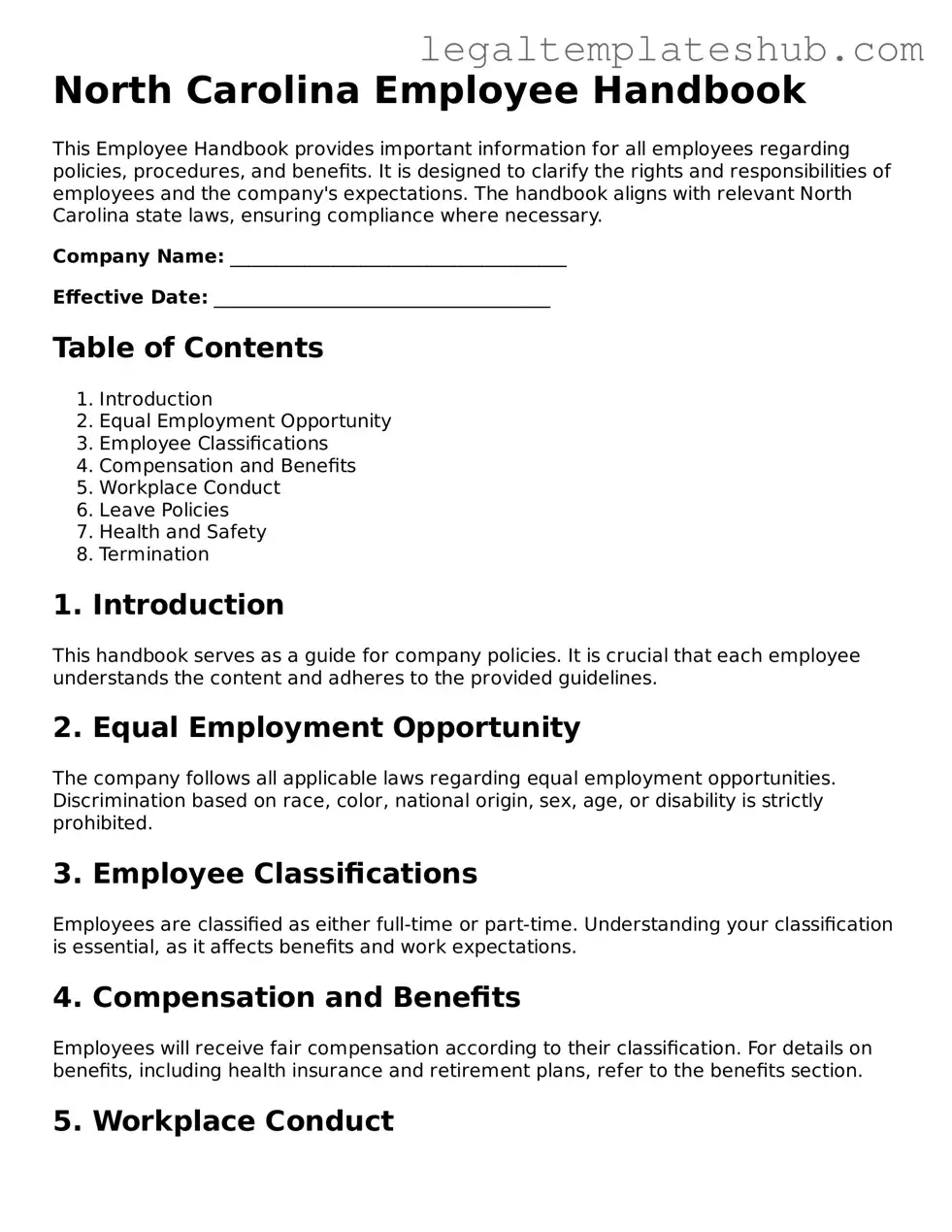Printable Employee Handbook Document for North Carolina
The North Carolina Employee Handbook form serves as a vital document that outlines the policies, procedures, and expectations for employees within an organization. This form not only helps to establish clear communication between employers and employees but also ensures compliance with state regulations. To create a comprehensive handbook tailored to your workplace, consider filling out the form by clicking the button below.
Access Editor
